Panamax
description: class of ships of the maximum size that can pass through the original locks of the Panama Canal
22 results
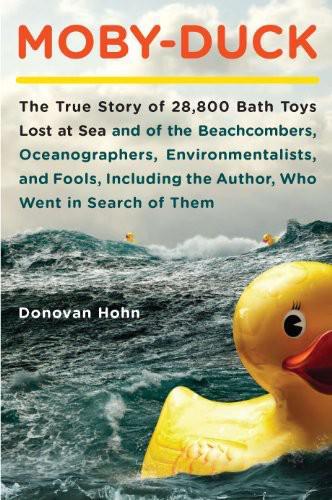
Moby-Duck: The True Story of 28,800 Bath Toys Lost at Sea and of the Beachcombers, Oceanographers, Environmentalists, and Fools, Including the Author, Who Went in Search of Them
by
Donovan Hohn
Published 1 Jan 2010
You’re marveling at the scale of humanity’s impact on this terraqueous globe and at the oceanic magnitude of your own ignorance. You’re giving the plight of the Laysan albatross many moments of thought. The next thing you know, it’s the middle of the night and you’re on the outer decks of a post-Panamax freighter due south of the Aleutian island where, in 1741, shipwrecked, Vitus Bering perished from scurvy and hunger. The winds are gale force. The water is deep and black, and so is the sky. It’s snowing. The decks are slick. Your ears ache, your fingers are numb. Solitary, nocturnal circumambulations of the outer decks by supernumerary passengers are strictly forbidden, for good reason.
…
“Please be advised that the APL China v. 030 has been delayed due to severe weather encountered enroute to Seattle,” the fax began. “The ship has suffered some weather damage, but we do not yet know the full extent.” To appreciate the full extent of the damage the APL China had suffered, one must first appreciate the full extent of the APL China. The China was a C-11-class post-Panamax ship, meaning that—at 906 feet long and 131 feet wide—it was too big for the locks of the Panama Canal. Standing on a dock beside it, you would have felt as though you were standing at the foot of an unnaturally smooth cliff, a palisade of steel. The carrying capacity of a container ship is measured in TEUs, or twenty-foot-equivalent units, because a standard shipping container is twenty feet long.
…
In mid-January, when I’d be returning from China, there were no NSB ships departing from Hong Kong for Seattle, but there was one ship—the Hanjin Ottawa—departing from Pusan, South Korea, for Seattle, following roughly the same route the Ever Laurel had taken sixteen years before, and roughly the same route the China had taken in 1998. Along this route, the toys had broken free, changing from containerized cargo into legendary characters. Along this route, some oceanic force had beaten a post-Panamax ship to ribbons. Now, from Pusan, I’d travel this route. I also had other, vaguer, more philosophical reasons for shipping out, reasons that the actuarial phrase “act of God” helps explain. I didn’t expect an ocean crossing to restore my faith in God, exactly—at least not in a biblical God; I lost that irretrievably long ago.
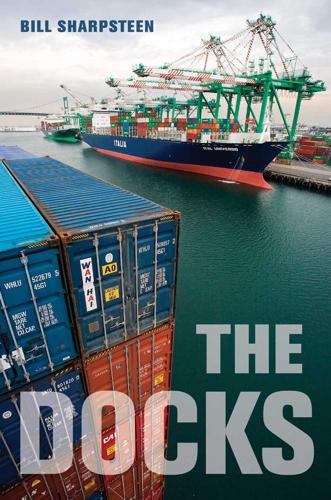
The Docks
by
Bill Sharpsteen
Published 5 Jan 2011
(However, those in skilled positions such as crane drivers are often sent only to jobs that require their particular expertise.) When the lashing jobs are doled out, longshoremen will occasionally refuse them, a decision called flopping, and wait their turn for another, easier position. While the lashers are busy, the crane drivers position the terminal’s four Super Post-Panamax cranes, better known as hammerheads, that can reach over any ship’s girth and, with a 1,000-ton capacity, snatch the containers one by one. The eight-story cranes creep almost silently along rails that are buried in the asphalt dock and covered by a thick rubber strip that ripples off to the side as the wheels push through it.
…
Coast Guard Coast Progress, 194 cold ironing, 50, 81 Committee of 500, 101 communism, 108, 109; fear of, 98 Communist Party, 101, 108, 109, 114, 115, 118, 119, 122; and Harry Bridges, 119 containers, 28, 39, 40, 247; first use of, 36; size of, 34 container seals, 245, 251, 252 COSCO-CKYH Alliance, 261 Costco, 135 Covarrubias, Jose, 169, 170, 176 Coynes, Mark, 274 CRA (Community Redevelopment Agency, Los Angeles), 85, 91 cranes: low-profile, 61; Super Post-Â� Panamax, 38 Crescent shipping line, 94 Crouthamel, Charles, 49 Crouthamel, Jeff, 47 Crowley, Tom, 265 Crowley, Tom Jr., 266 Crowley Maritime Services, 265 cruise ship terminal, 52, 241 customs. See U.S. Customs and Border Protection cycloidal propulsion system, 268 Dallas Logistics Hub, 159 Darcy, Sam, 115 DDT, and hold men, 185, 191 DiBernardo, Michael, 262 Diesel Death Zone: origin of term, 72 Indexâ•… /â•… 305 diesel particular matter, 34; fine partiÂ� cles, 73; health effects of, 73; ultrafine particles, 73 Digges, Robert, 176 Dispatcher, 45, 140, 194 dispatch hall, 38, 116, 187, 197 Dunbar, Eugene, 111 Dwyer, Jim, 275 East Basin, 236, 273 E-Modal software, 182 EPA, 73, 167 Evergreen Shipping Agency (America) Corporation, 26, 66, 164, 244; lease with port, 80 Ewert, Nathan, 239 Exxon/Mobil oil liquid bulk Â�terminal, 67 Fairley, Lincoln, 193 fink hall, 94 flopping, 38, 188 Flores, Mark, 217 Foley, Thomas, 122 Forbes, John F., 108 four-on, four-off, 192 Fox, Mike, 168, 174, 182; on ATA Â�lawsuit, 179 Fox Transportation, 166, 170 Freeburg, Steven J., 217 Freeman, David, 58, 62, 77, 78, 81, 256 Gabrielino Indians, 3 Garcia, Al, 241 Genis, Sandra, 70 Golden, Deborah, 208, 210, 211 Golden Consent Decree, 212, 218 Goodman, Louis E., 124 Great Wines International, 142, 147, 151, 155 Green Fleet Systems, 172 “green growth,” 76 Gunter, Janet, 65, 66, 70; and aesthetics issue, 70; and Geraldine Knatz, 87 Hahn, James, 64, 68 Hall, Edward, 45 Harbor Ship Supply, 47 hawse piper, defined, 270 Herman, Jimmy, 199 Hoertkorn, Thomas M., 110 hold men, 185, 191; defined, 96; and DDT, 185, 191; and “penalty wage,” 103 Holmes, Jan, 134 Holmes, John, 177, 180, 237, 242 hooks, of hold men, 96, 189 Horizon Lines, 131 House of Trades, Spain, 3 Houston, 36, 82, 135, 152, 157, 159, 260, 261 Huang, Weihang, 245, 247 Hunt, A.
…
Sansinena, explosion of, 84 Stahl, Joe, 106 Stallone, Steve, 126 strad (straddle carrier), 40, 173 strikebreakers, 104, 107 strikes: “big strike,” 107; “Bloody Thursday,” 112, 114; ILA strike of Indexâ•… /â•… 309 1916, 99; ILA strike of 1934, 104, 107; riot of July 3, 1934, 110; San Francisco general strike, 115; use of tear gas, 109, 110, 113 St. Sure, Paul, 123, 193 Super Post-Panamax cranes, 38 swampers’ board, 190 Swift Transportation, 172 Taft-Hartley Act, 140 Takasugi, Robert M., 212, 218 Teamsters, 115, 174, 177, 192 Terminal Island, 27 terrorist attacks, 232, 233 Terrorist Watch List, 249 Tier II Community Advisory Committee, 63 “topping the boom,” 189 Torm Sara, 273 Total Transportation Services, Inc.
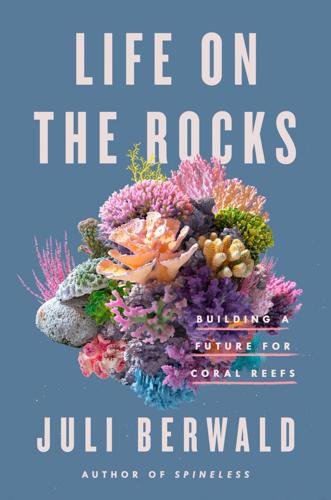
Life on the Rocks: Building a Future for Coral Reefs
by
Juli Berwald
Published 4 Apr 2022
The improvements more than doubled the maximum size of the ships that could make the passage to those carrying twelve thousand containers and increased the maximum width of ships from 106 to 161 feet. This spawned a slew of retrofits in ports up and down the east coast of the United States to increase capacity for the new, larger vessels, named, as if for a sequel to a futuristic thriller, Neo-Panamax. In Miami, the $205 million expansion to deepen 2.5 miles of the port’s ship channel and accommodate the Neo-Panamax vessels began in 2013. The shipping lane was slated to cut through a staghorn coral reef. Since the species was designated as threatened under the Endangered Species Act, the Army Corps of Engineers was required to assess how bad the damage would be.
…
See also evolution; genetics Nature Conservancy, 117, 231, 232, 237–38, 240–41 Neanderthals, 45 Nedimyer, Kelly, 95–96 Nedimyer, Ken, 95–96 nematocysts (stinging cells), 37, 79, 97, 170, 293 Neo-Panamax, 99 New Caledonia, 26 New York Times, The, 249 nitrogen, 4, 36–39, 73, 290 Nobel Prizes, 120, 229, 243 Nova Southeastern University, 108, 208 Nuclear Meltdown Lepto, 161 nucleation, 248–49 O obsessive-compulsive disorder (OCD), 53 –54, 76–77, 83, 100–101, 175–76 Ocean Agency, 24–25, 84, 124–25, 137, 226 ocean currents, 34, 36, 43, 44, 63, 64, 131, 167, 190, 292 Ocean Gardener, 165 Ocean Initiative, 14 octinoxate, 85, 89 octisalate, 85 octocrylene, 85 Oculina patagonica, 81–82 “Of the Corals” (Mallet), 41–42 offshore oil drilling, 291 oil and gas industry, 185, 288, 291 O’Neil, Keri, 207–8, 209, 210 Ophryotrocha puerilis, 196 Orbicella annularis, 43, 194, 199 Oregon State University, 73 Orlowski, Jeff, 25–26 Ostreopsis genus, 161 Ostrom, Elinor (“Lin”), 120–21, 127, 140, 243, 285 Ostrom, Vincent, 120 overgrazing, 115–16 oxybenzone, 84–90 oysters, 52 P Pacific Ocean, 47, 66, 99, 131, 135, 167, 207.

Infinite Detail
by
Tim Maughan
Published 1 Apr 2019
He goes through this every time they pass one of these ports, regardless of the continent—transfixed by the sight of capitalism on pause, the secret network that kept the world running mothballed and abandoned. His train of thought is interrupted by a huge burst of light above them. One of the Zodiac crew has climbed the top of the vast, five-hundred-foot-high super-post-Panamax crane that towers above and over them, and lit a flare. As it’s slowly waved back and forth it scatters light across the crane’s vast skeletal frame, yet more smoke rising into the dark sky. It looks to Rush like an act of victory and defiance; like news footage of freshly liberated citizens climbing to the top of statues of their now-fallen dictators, to deface their heads and celebrate their liberty in that brief moment of joy before worrying what will happen next.
…
On his previous, precrash voyages Simon had ferried dozens of architects, designers, journalists, and futurists on the Dymaxion—all the hip infrastructure tourists, ready to pay him thousands so they could see it all firsthand, so they could ooh and aah at the Apollo-project levels of human engineering, so they could be wooed by this moonshot built to fill shopping malls. They’d spend a few weeks on the ship, staring out at the fields of containers in awe, before returning home to their speculative models, VR art installations, and thousand-word prose-poem odes to post-Panamax cranes. But Simon had started to hate it all. It had silently consumed him with anger and fury at its extravagance, its wasted potential, its inhuman cost. This, Rush was sure, was why this final voyage was taking place. Simon wanted to see it dead. He wanted to make sure, while the rest of the world crumbled, that it was crumbling too, and that it couldn’t come back to life, that it couldn’t start up again and reanimate the globe-consuming consumerist beast it had grown and fed.

Age of Discovery: Navigating the Risks and Rewards of Our New Renaissance
by
Ian Goldin
and
Chris Kutarna
Published 23 May 2016
Rather, it was because a 5,000 TEU ship was the biggest that could squeeze through the locks of the Panama Canal (such ships are labeled “Panamax”), and no one wanted to buy a container ship that could not serve global shipping’s most important route: the canal link between the Americas’ Atlantic and Pacific coasts. In 1996, however, one of the biggest shipping companies in the world, Maersk of Denmark, decided to challenge that orthodoxy. It took delivery of the 6,400-TEU “post-Panamax” ship Regina. The economic center of gravity, Maersk reasoned, was shifting. The Panama Canal was irrelevant to the fastest-growing trade routes: the Pacific routes connecting the Far East (China, Korea, Japan), the Asian Tigers (Hong Kong, Singapore, Taiwan) and the west coasts of North and South America; the Atlantic routes connecting Europe to South America; and the Indian Ocean routes connecting Europe to the Middle East and Asia (via the Suez Canal).

Arriving Today: From Factory to Front Door -- Why Everything Has Changed About How and What We Buy
by
Christopher Mims
Published 13 Sep 2021
It’s also the beginning of the most dangerous and hair-raising part of his regular circuit around the world. “There are no other places in the world that are busier than the South China Sea,” says Jeff. Here, the captain and every officer on watch must all be on high alert. Fishing boats, cargo ships of every size—from rusting old bulk carriers to the largest container ships afloat, “Post-Panamax” vessels carrying nearly twice the cargo on the Brussels—and assorted other flotsam litter the ship’s radar, the horizon, and all the sea between the sky and the bow of the ship. The navigational technology on board a modern container ship includes two kinds of GPS, one to access the U.S. network and the other the Russian; the Automatic Identification System (AIS), on which ships constantly broadcast their identity, heading, and speed; the Electronic Chart Display and Information System (ECDIS); and a succession of backup navigational aids from every era of sailing between the twentieth century (the electronic gyrocompass) and second-century Rome.
…
See also Bezosism; scientific management Mao Zedong, 278 Marcus, Gary, 142 Marine Exchange of Southern California, 48, 50 Marketplace (Amazon business), 236 Marx, Karl, 87 Marzougui, Hedi, 28 Mason, George, 264 mass production, development of, 99–101, 214, 215 McAdam, John London, and macadam roadbuilding, 129 McDonald’s, 123, 205, 220 McKaye, Benton, 130 McLean, Malcolm, 14 McNamara, Robert, 222 Mechanization and Modernization Agreement, 71 Melville, Herman, 30 MEMS (microelectromechanical systems), 145 Mendez, Marc, 68, 78 Microsoft, 204 “the middle mile,” 251–62; Amazon warehouses, delivery of goods from, 170, 184, 188, 195; defined and described, 251–53; delivery service companies involved in, 252; delivery stations, 261–62; sortation centers for, 252–61 Midvale Steel Works, 96 Mississippi River, freight carriage on, 128 Mitsubishi Electric, 95 mobile shelving units, 172, 174, 175, 179, 181, 183, 185–86, 201, 214, 215, 227, 231 monkey’s fist knot, 64–65 monopsony, 137 Moore’s law, 145, 153 Moravee, Hans, Mind Children: The Future of Robot and Human Intelligence, 178 Moravee’s paradox, 178–79, 243 Morreale, Austin, 197–98, 200, 208, 209–10 Motor Carrier Act (1980), 110 Motorola, 164, 228, 286 Mountz, Mick: Amazon warehouses and, 164–66, 168–69, 173, 174; Bezosism and management systems, 201, 211–14, 228; robotic warehousing and, 178, 182, 183, 191 MSC (shipping company), 22, 70 MSC Industrial Supply, 241–45, 248–49 MSDs (musculoskeletal disorders), 237, 238 muda, 226 Mujin (robotics company), 246 Municipal Warehouse No. 1, Port of Los Angeles, 46 Muro, Marc, 76 Murray, Matt, 209 Musk, Elon, 79, 155 MWPVL International, 201 N95 masks, 8, 10 NASA, 144, 248 natural gas supply chain, 91–92 navigating shipping vessels, 37–43 Nazi-era German technology, 131, 143–44 NBC News, 276 Nelson, Daniel, 98, 102 Neopanamax vessels, 27 Netherlands (container ship), 48–50, 52, 54, 55, 57, 60–62 New York and New Jersey, Port of, 48, 55, 61 New York Herald, 129 New York Herald Tribune, 104 New York Times, 112, 114, 276 NEXT Trucking, 74 Nieves, Erik, 244, 247, 249 NIKE system at Amazon, 174–75 Nvidia, 153, 154 Oakland, CA, port of, 52 Obama, Barack, 279 Ocado, 186 OfficeMax, 168 oil crisis of 1970s, 9 Omar, Nimo, 171 Onetto, Marc, 221–26, 228, 229–30, 232, 248 OOCL, 22, 26, 29, 36 OOIDA (Owner-Operator Independent Drivers Association), 111 Operation Paperclip, 144 ORION (On-Road Integrated Optimization and Navigation) system, 283–84 Osaro, 246 OSHA (Occupational Safety and Health Administration), 233, 240, 279 Pacific Maritime Association, 71 Pacific Ocean. navigating, 40–43 Pacino, Al, 277 Paltrow, Gwyneth, 184 Panama, as flag state, 32 Panama Canal, 26–27, 38 Panttila, John “JP,” 148–49 parallelization, 154 Pennsylvania Turnpike, 132 PepsiCo, 136 physical demands: on Amazon workers, 171–76, 197–98, 200, 202, 235–37; on delivery drivers, 272–73 “pick” (extraction of items from storage) at Amazon warehouses, 184–88, 202 pick towers, 160 Pickle (robotics company), 246 Piggly Wiggly, 167 pilot card, 57 Plus One Robotics, 243–46 pods, at Amazon, 175 Portable Pilot Unit, 59 Porter, Brad, 175, 181, 183, 227, 239 Portland, OR, port of, 52 ports. See automation, at ports; containerized shipping; ships and shipping Postmates, 217, 265 post-panamax vessels, 27, 37 predictability: automation, predictability, and efficiency, relationship between, 230–32; ships and shipping, predictability versus speed in, 35–36 preppers, 7 Price, Chuck, 143, 152 Prime. See Amazon Prime ProPublica, 276 Public Roads Administration, 131 queuing theory, 82–83 race/racism, 114, 171, 212, 235 radar, 31, 37–29, 41, 47, 48, 50, 143, 147 Raiders of the Lost Ark (film), 159 RAM, 173, 183 “random stow,” 174, 183, 185–86, 187 Rapid Entire Body Assessment, 238 Real Women in Trucking, 139 reefers (refrigerated containers), 34–35 Relentless.com, 235 Renault, 95 repetitive stress injuries, 200, 208, 233–34, 239 Reynolds, Burt, 109 RightHand Robotics, 217, 246 RIM, 286 River Rouge Complex, Ford Motor Company, 91, 101 robotic delivery, 263–70 robotic warehousing, 159–60, 177–96; accident/injury rates and, 213–14; algorithms in, 181–82, 185, 193; Bezosism, enabling technology for, 199, 200–202; conveyor systems, 163–70, 189, 194; drive units, 160, 179–83, 186, 201, 227, 248; Fanuc industrial robot arm, 159–60, 193; frequent updating of systems, 180–81; full automation, goal of, 241–50; human interaction with, 177–79, 180, 182, 186–87, 189, 191, 192–94, 223, 241–50; loading delivery trucks, 194–95; mobile shelving units, 172, 174, 175, 179, 181, 183, 185–86, 201, 214, 215, 227, 231; multi-item shipments, concatenating, 188–92; packers and packing, 192–94; percentage of robotized Amazon fulfillment centers, 201; “pick” (extraction of items from storage), 184–88; pick towers, 160; self-organization in, 182; storage of items in, 183–84, 195 Roosevelt, Franklin D., 61, 128 Rosado, Jenny, 271–77, 282–85, 287 Rossman, John, 236 Rotterdam, port of, 70 routing sorter, 189 RTGs (rubber-tired gantry cranes), 20–21, 23 Russell, Darin, 241–44, 248 safety training and safety culture at Amazon, 200, 206, 208, 216, 239, 276, 279 Sam’s Club, 167 Samsung, 16, 26, 153 San Francisco, port of, 52 Savannah, GA, port of, 61 Save Santa (1998 holiday season at Amazon), 224 Schneider (trucking company), 107 Schumpeter, Joseph, 242 Schwartz, Ruth, 105 scientific management (Taylorism), 87–106; at Amazon, 174–75, 193; automation and, 101–2; basic principles of, 95–96; Bezosism as modern-day version of, 198, 199, 231, 232; in Cheaper by the Dozen (1948), 89–90; combination of automation, surveillance, and work intensification by, 113, 157, 213, 231–32, 234–35; “digital Taylorism,” 198, 235; efficiency versus productivity, 87, 90, 95, 96, 98, 101–6; evolution of, 101–6; incentive pay, 95, 96, 97; incorporation of supply chain into factory system and, 2, 90–92; precise time management, 96–97, 232; “random stow” principle and, 185; reasons for success of, 98–101; significance/anonymity of, 87–89; Six Sigma compared, 222; stressful working conditions, leading to, 88, 95, 97, 98, 213, 234; Frederick Winslow Taylor, life and ideas of, 87–90, 93–98; trucks/truck drivers and, 113; universal applicability claimed for, 224; worker empowerment and, 95–97, 229–30 Scotland: macadam roadbuilding, invention of, 129; transportation of cod to China from, 12 Sea-Land, 14 Sears, Roebuck and Co., 101, 281 self-driving trucks, 141–57; AI system, 141–43, 147–52, 153; algorithms used by, 151–52, 153; economics of trucking and, 140, 152; fully autonomous system, goal of, 152–57; intersection with humans, 141, 147, 148–51, 155–57; maps and mapping, 142–43, 147; positional systems, 143–47; robotic delivery systems compared, 267–69; software and microchip technology, 145, 152–54; sortation center automation and, 260 Shakopee, MN, Amazon fulfillment center at, 161, 171, 203, 205 Shenzen special economic zone, China, 15, 93 Sherwood, Dennis, 55 shipping containers.
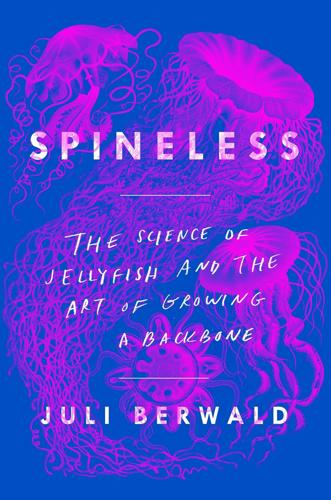
Spineless: The Science of Jellyfish and the Art of Growing a Backbone
by
Juli Berwald
Published 14 May 2017
Scientists suspect that the Adriatic bloom was a repeat invasion, suggesting that ballast water continues to transport comb jellies from other parts of the world. The same year, a project doubling the size of the Panama Canal was completed. In 2013, only three ports along the U.S. coast were equipped to receive the supersize ships built for the canal’s New Panamax size and draft limits, but plans are under way for renovations from Florida to New York to accommodate the behemoth boats. Another, larger, canal is proposed to slice through Nicaragua, further connecting the Atlantic and Pacific at their midsections. In 2015, the Suez Canal was expanded, doubling the ship traffic between the Indian Ocean and the Mediterranean.
…
See also Comb jellies Mobile Bay (Alabama), 22 Mongooses, 29 Monk seals, 76 Monterey (California), 101 Monterey Bay Aquarium, 54, 57, 60–62, 152, 299 Monterey Bay Research Institute, 10 Moon jellyfish, 39, 58, 76, 114, 296, 300 in aquaria, 4, 54, 96, 100, 122, 132 culinary, 220 efficiency of motion of, 90, 92 flotation of, 59 medusae of, 65, 153 new species of, 78–79 polyps of, 54–55, 62–64, 190–91 Robojelly of, 88 sensory structures of, 122–24, 128, 129, 138 toxins of, 255 Moreno, Victor, 297 Munatones, Steve, 252 Mussels, 106, 216 Nagasaki, 110 Nagoya University, 110 Namibia, 9, 31–33 Naples (Italy) Zoological Station, 73 NASA (National Aeronautics and Space Administration), 107, 128–29 National Center for Ecological Analysis and Synthesis (NCEAS), 35, 36, 165–66, 204–6 National Geographic, 6, 8–9 National Research Council, Institute of Sciences of Food Production, 50 National Science Foundation, 25 Natural selection, 142, 259 Nature (journal), 124 Navy, U.S., 87 Nazis, 73–75 Nemerteans, 73 Nemertes (sea nymph), 73 Nemopilema nomurai (Nomura’s jellyfish), 58, 183, 186, 202, 230 Nereids (sea nymphs), 73 Netherlands, 65, 73 Neurotransmitters, 114, 139–40 New Guinea, 77 New Jersey, 296 New Panamax ships, 30 New York, 31 State University, Stony Brook, 279 New York Times, The, 247 Newfoundland, 68 Nicaragua, 31 Nile River, 244 Nobel Prize, 11, 94, 118–19, 139, 155 Nomura’s jellyfish. See Echizen kurage; Nemopilema nomurai North Carolina, 199 North Sea, 30, 65 Northern Ireland, 26 Norway, 14, 77, 300 Norwegian Sea, 173 Nudibranchs, 191–92 Nyad, Diana, 251–55, 299 Obama, Barack, 199, 302 Obelia, 229 Ocean exploration versus space exploration, 107 Ocean Research & Conservation Association (ORCA), 107 Oceana (nonprofit), 45 Oceanus (god), 56 Octopus, 8, 124, 226, 297 Oil spills, 37–38, 279–80 Oman, 25 On the Origin of Species (Darwin), 132, 158 Oregon, 78, 199 Orkney Islands (Scotland), 26–27 Ostracod, 103, 110, 111, 113 Overfishing, 15, 27, 32, 63, 80, 187, 201, 206, 223, 302 Ovid, 7 Oysters, 134, 172–73, 198, 233 Pacific Ocean, 31, 69, 79, 101, 111, 172, 199, 238, 247–48 Palau, 199 Panama, 154 Panama Canal, 30 Parkinson’s disease, 154 Patry, Wyatt, 60–62, 299 Pegasus, 7 Pelagia, 70 Pelican Island National Wildlife Refuge (Florida), 199 Perseus, 7, 266 Phialella zappai, 157 Philippines, 9, 24 Photosynthesis, 61, 101, 192, 217, 272 Phyllorhiza, 290 Phytoplankton, 32, 101–2, 104, 166, 168–69, 216–17 Pieribone, Vincent, 114 Piraino, Stefano, 150–56, 236, 245–46, 299 Pitcairn Islands, 199 Pitt, Kylie, 168–70 Plankton, 5, 12, 57, 69, 73, 101, 104, 169, 171–72, 176, 217 vertical migration of, 123, 252 See also Phytoplankton; Zooplankton Planulae, ix, 1, 55, 62, 123, 152, 233 Pliny the Elder, 109 Pocillopora, 278 Podocysts, 56, 65, 229–30 Pollan, Michael, 118 Polydectes (mythological king), 266 Polypodium hydriforme, 68 Polyps, ix, 16, 19, 67, 173, 184, 190, 233, 301 budding of, 56–57, 62, 151, 183 coral, 278 influence of climate and acidification on, 9, 33, 274, 276 predators of, 191–93 physical structure of, 55, 151 podocysts produced by, 229–30 predators of, 191–93 reproductive process of, 56, 63, 203 responses to light of, 123 reverse aging of, 151–55 solid surface habitats for, 63–65, 183, 190–91, 229 in space mission experiments, 128–30 structure of, 55, 151 toxins in, 255 Population growth, human, 15, 33–34 Porins, 250–51 Port Aransas (Texas), 222 Portuguese man o’ war, 11, 25, 79, 192 Poseidon, 7 Power plants, 9, 24, 40, 243, 245, 258 Prasher, Douglas, 116 Protista, 71 Protozoans, 11 Providence College, 87 Puerto Rico, 75–76, 78, 123 Pufferfish, 171, 190, 212, 226, 245 Puget Sound (Washington), 6, 14, 63–64, 111, 187 Purcell, Jennifer, 15–16, 33–34, 63–64, 178–79, 187, 189, 205, 299, 301–2 Qingdao (China), 15 Rabbitfish, 244–45 Red Sea, 244–45, 266, 273, 278–79, 286, 292 Red tide, 101, 303 Reefs, 5, 255, 266, 268–74, 276–81, 286, 304 artificial, 63 See also Corals Remotely operated vehicles (ROVs), 13 Restaino, Dena, 192 Rheumatoid arthritis, 50 Rhizostoma pulmo, 51, 296.
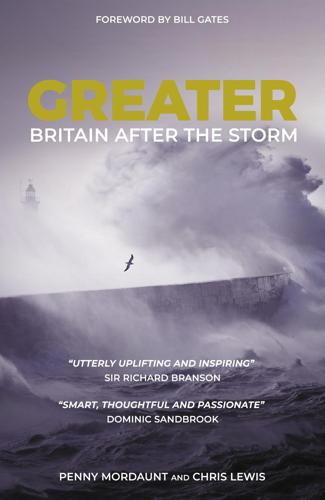
Greater: Britain After the Storm
by
Penny Mordaunt
and
Chris Lewis
Published 19 May 2021
Some suggest that as much as a quarter of the approximately 60 million tons of cargo that the Los Angeles and Long Beach ports handle each year could be diverted. Mexico will get new ports, too, and upgraded railways and highways in the effort to ensure that commerce from the East and West Coasts of North America can reach China ever more easily. This will be matched with another two proposed Panamax-sized canals, the first in Nicaragua – the Grand Nicaragua Canal – and the second across the Kra Peninsula in Thailand – the Thai Canal.48 China is also moving closer to Malaysia in its BRI projects and has invested $14 billion (US$10 billion) in the Melaka Gateway project, a port that could replace Singapore as the main entry point in the region.49 In Latin America, the BRI takes the form of an ocean railway from Brazil to Chile and the Trans-Amazonian Highway across Brazil.50 The Arctic aspect of the BRI is a maritime route that runs from Dalian in eastern China through the Arctic Circle to Rotterdam and then south through the Suez Canal back to China.51 The widening of the Suez Canal to accommodate two-way traffic and Panamax-size tankers is one of the biggest projects of all within the BRI.52 All this investment will add at least a further $5 trillion to global investment.53 When you add this to the $18 trillion already invested by global central banks,54 you can see that this is significant in terms of both scale and risk.
…
This will be matched with another two proposed Panamax-sized canals, the first in Nicaragua – the Grand Nicaragua Canal – and the second across the Kra Peninsula in Thailand – the Thai Canal.48 China is also moving closer to Malaysia in its BRI projects and has invested $14 billion (US$10 billion) in the Melaka Gateway project, a port that could replace Singapore as the main entry point in the region.49 In Latin America, the BRI takes the form of an ocean railway from Brazil to Chile and the Trans-Amazonian Highway across Brazil.50 The Arctic aspect of the BRI is a maritime route that runs from Dalian in eastern China through the Arctic Circle to Rotterdam and then south through the Suez Canal back to China.51 The widening of the Suez Canal to accommodate two-way traffic and Panamax-size tankers is one of the biggest projects of all within the BRI.52 All this investment will add at least a further $5 trillion to global investment.53 When you add this to the $18 trillion already invested by global central banks,54 you can see that this is significant in terms of both scale and risk.
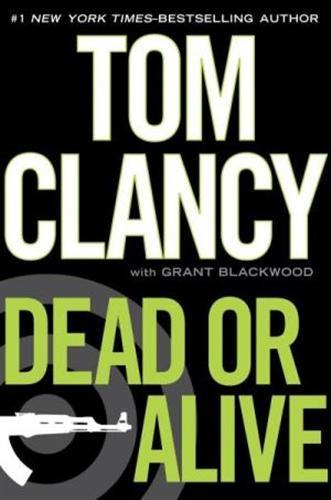
Dead or Alive
by
Tom Clancy
and
Grant (CON) Blackwood
Published 7 Dec 2010
The question that Allison didn’t let herself wonder too much about was the nature of the information her employer was seeking. Why in the world, she wondered, did they care about groundwater in the middle of a desert? As Panamax “box ships” went, the Losan was small, a “twelve abreast” 2,700 TEU—twenty-foot equivalent units—vessel measuring 542 feet, whose capacity had long since been surpassed by Post Panamax descendants, but Tarquay Industries of Smithfield, Virginia, was less interested in modernity than it was in cutting its losses. Of the 120 five-hundred-gallon propane tanks it had sold to the government of Senegal, forty-six had proved defective, having slipped through quality control with improperly welded lifting lugs.
…
She forced some tears into her eyes. He held out his hand to her. “Come here.” “Why?” “Just come here.” She stepped over to him, to his hand. He said, “Just don’t tell anybody I talked about this stuff, okay? They’d throw me in jail.” She smiled and wiped a tear from her cheek. “Promise.” The Panamax cargo ship Losan was three days from its destination, having made the bulk of the Atlantic crossing on calm seas and under clear skies. Losan’s captain, a forty-seven-year-old German named Hans Groder, had been the box ship’s master for eight years, having spent ten months out of every one of those years at sea.
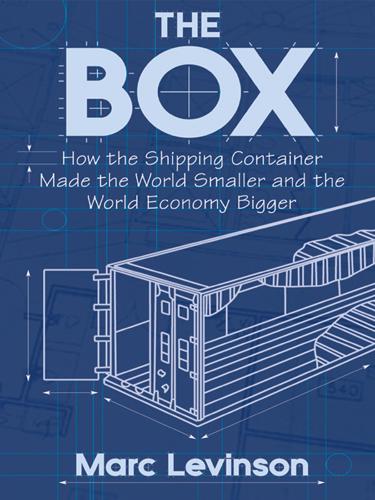
The Box: How the Shipping Container Made the World Smaller and the World Economy Bigger
by
Marc Levinson
Published 1 Jan 2006
Naval architects were no longer forced to design streamlined shapes to help achieve high speeds, and could concentrate instead on increasing payloads. Without getting much longer, vessels got much larger. The ships entering service by 1978 could hold up to 3,500 20-foot containers—more than had entered all U.S. ports combined during an average week in 1968. These Panamax vessels—the maximum size that could fit through the Panama Canal—could haul a container at much lower cost than could their predecessors. The construction cost itself was lower, relative to capacity: a vessel to carry 3,000 containers did not require twice as much steel or twice as large an engine as a vessel to carry 1,500.
…
By the 1980s, new ships holding the equivalent of 4,200 20-foot containers could move a ton of cargo at 40 percent less than could a ship built for 3,000 containers and at one-third the cost of a vessel designed for 1,800.5 And still the vessels grew. The economies of scale were so clear, and so large, that in 1988 ship lines began buying vessels too wide to fit through the Panama Canal. These so-called Post-Panamax ships needed deeper water and longer piers than many ports could offer. They were uneconomic to run on most of the world’s shipping lanes. They offered no flexibility, but they could do one thing very well. On a busy route between two large, deep harbors, such as Hong Kong and Los Angeles or Singapore and Rotterdam, they could sail back and forth, with a brief stop at each end, moving freight more cheaply than any other vehicles ever built.
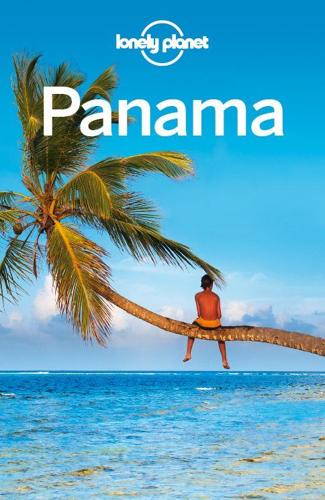
Lonely Planet Panama (Travel Guide)
by
Lonely Planet
and
Carolyn McCarthy
Published 30 Jun 2013
Although as much as 5% of the world’s total sea commerce traverses the Panama Canal, the Suez Canal in Egypt, which is capable of handling larger vessels, serves more than 6%. Furthermore, the Panama Canal is already operating at more than 90% of its maximum capacity and will reach its saturation point in less than five years. The biggest challenge the Panama Canal faces is luring the enormous post-Panamax vessels, which currently depend on either the US Transcontinental Railroad or the Suez Canal. But those in favor of the canal expansion are hoping that this lucrative market will adopt the Panama route, especially as trade volumes between Asia and the continental east coast increase. There is concern that the expansion will not offset its construction costs.
…
Financing the project requires US$2.3 billion in loans from various foreign government-owned banks, in addition to funding by the Panamanian government and the Panama Canal Authority. Since it’s estimated that the value of tolls will increase significantly over the next 20 years, the hope is that the expected flow of post-Panamax vessels through the canal will eventually pick up the tab. Sights 1 Miraflores Locks Miraflores Visitors Center MUSEUM ( 276-8325; www.pancanal.com; viewing deck/full-access US$5/8; 9am-5pm) The easiest and best way to visit the canal is to go to the Miraflores Visitors Center, located just outside Panama City.
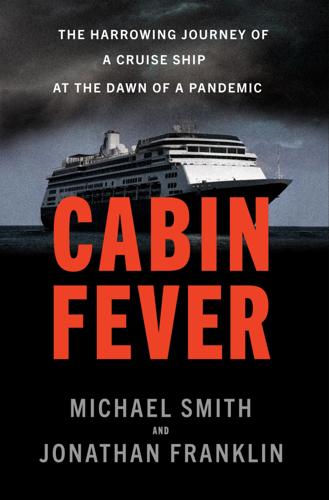
Cabin Fever: The Harrowing Journey of a Cruise Ship at the Dawn of a Pandemic
by
Michael Smith
and
Jonathan Franklin
Published 14 Jul 2022
They’d already allowed the ships to meet up in Panamanian waters to facilitate the transfer of supplies, including oxygen, from the Rotterdam to the Zaandam. But the doctors needed more. To minimize contact between dockworkers and the crew aboard the infected cruise ships, the Panamanian government authorized the ships to skip the traditional older locks system and transport through the faster neo-Panamax locks finished in 2016. Slightly wider, these were deemed spacious enough to dispense with ropes and the land crews who guided and pulled ships through the narrow locks of the canal via a system of mini locomotives. That guidance system employed at least a dozen land laborers (the “tie-down team”) and involved ropes that needed to be winched back and forth between land and the ship, potentially touched by workers on both ends, the hull coming within four feet of the canal’s banks in some places.

The Glass Hotel
by
Emily St. John Mandel
Published 14 Jun 2020
“Maybe we put the ships out to anchor now, then commit to revisiting the question in a year, two years, and if we still don’t need them, we scrap the excess.” “Seems like a reasonable course of action to me,” D’Ambrosio said. “Thoughts, objections?” “There’s the question of the new Panamax vessels,” Miranda said. There was a collective sigh. The company had commissioned two new ships back in the lost paradise of 2005, when the demand had seemed endless and they were struggling to keep up, and the ships—under contract, paid for, two and a half years into the building process, and now extravagantly unnecessary—would be delivered from the South Korean shipyards in six months.
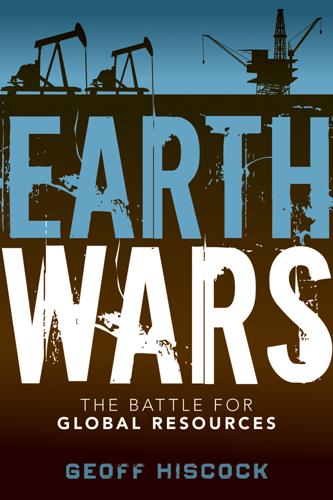
Earth Wars: The Battle for Global Resources
by
Geoff Hiscock
Published 23 Apr 2012
CHAPTER 6 Old Coal Still Burning Brightly Steam is no stronger now than it was a hundred years ago, but it is put to better use. —Nineteenth-century American essayist Ralph Waldo Emerson For the Panama-flagged coal ship Pasha Bulker, there was nowhere to hide from the violent storm known as an “east coast low,” that overwhelmed it one winter’s morning in June 2007. The 77,000-dwt Panamax-class ship, which had been launched in Japan only a year earlier, had spent the previous two weeks in the coal queue that forms off the Port of Newcastle on the Australian east coast. As the first storm warnings went out from the local weather bureau, the master of the Pasha Bulker made an ill-judged call to stay put—he was there to load 58,000 tonnes of coal.

Station Eleven
by
Emily St. John Mandel
Published 8 Sep 2014
Later that evening she would find herself troubled and at moments even a little amused by the memory of how casually everyone had once thrown the word collapse around, before anyone understood what the word truly meant, but in any event, there had been an economic collapse, or so everyone called it at the time, and now the largest shipping fleet ever assembled lay fifty miles east of Singapore Harbor. Twelve of the boats belonged to Neptune Logistics, including two new Panamax-class vessels that had yet to carry a single cargo container, decks still gleaming from the South Korean shipyards; ships ordered in a moment when it seemed the demand would only ever grow, built over the following three years while the economy imploded, unneeded now that no one was spending any money.
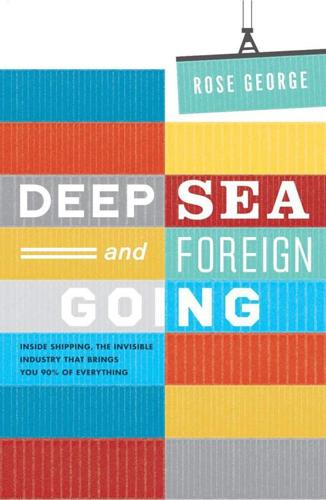
Deep Sea and Foreign Going
by
Rose George
Published 4 Sep 2013
CMA-CGM, MSC (Mediterranean Shipping Company, though its nickname replaces ‘Mediterranean’ with ‘Mafia’), Evergreen, China Shipping. French, Italian, Taiwanese, Chinese. The cogs, wheels and motors of the world and all its stuff. All these ships are rated Suezmax and above, according to the vital statistics of shipping, in which ships are sized by places they can fit through or round. Panamax is smaller than Suezmax, although Panama is now widening its canal in an expensive but surprisingly on-time development programme known as the Big Ditch. Kendal can’t yet fit through Panama, nor can E-class like Emma. Maersk may build a modified version that can if the Big Ditch ever becomes a Bigger Canal.
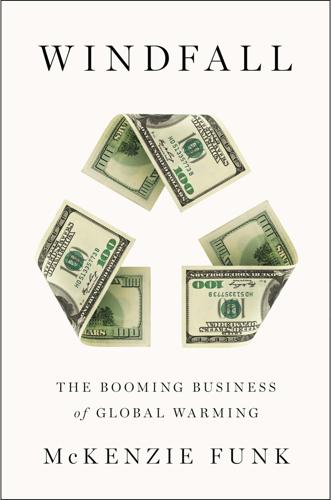
Windfall: The Booming Business of Global Warming
by
Mckenzie Funk
Published 22 Jan 2014
The surrounding desert, once known as the Valley of the Dead, has become one of America’s prime farming regions. Two-thirds of the country’s winter fruits and vegetables are grown here. In 2003, as the Colorado fell into drought, the IID agreed under threat of federal intervention to sell a record 277,000 acre-feet of All-American water—equivalent to 90 billion gallons, 5,000 Panamax tankers, or 20,000 Spragg Bags—to the San Diego County Water Authority. Most of the new All-American water would go to the City of San Diego, where until 2012 voters kept rejecting the idea of bolstering their meager water supply with treated sewage. Most of the city’s water, if history was any guide, would go to keeping four hundred parks and golf courses green.
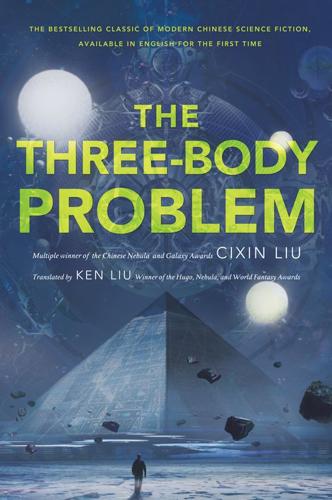
The Three-Body Problem (Remembrance of Earth's Past)
by
Cixin Liu
Published 11 Nov 2014
The parts of the ship below the waterline are used for engines, fuel, and ballast, causing a lot of noise, vibration, and interference. The conditions are too poor for computing centers and other similar facilities to be located there. But for the parts above water, a tighter nanofilament net will give better results.” “Then it’s best to set the trap at one of the locks along the canal. Judgment Day is built to Panamax specifications, just enough to fill the thirty-two-meter locks. Then we would only need to make the Flying Blade filaments thirty-two meters long. This will also make it easier to erect the pillars and string the filaments between them, especially for the underwater parts.” “No. The situation around the locks is too unpredictable.

Connectography: Mapping the Future of Global Civilization
by
Parag Khanna
Published 18 Apr 2016
Panama City is now positioning itself as the Dubai of Central America—the longest flight in the world now connects the two cities—upping its game in sectors such as real estate, free trade zones, and aviation, even attracting Asian airlines to make stopovers in Panama en route to South American destinations. And with a major expansion of the canal under way (just missing the centennial completion goal) to allow for simultaneous two-directional flow of large post-Panamax tankers, Panama will once again dent Valparaíso’s recent comeback as a pit stop for ships once too wide for the Panama Canal. Already Valparaíso’s container traffic trade with the United States is falling by double digits every year. Eventually, cruise ships may outnumber tankers as the city refashions itself into a cultural tourism hub.
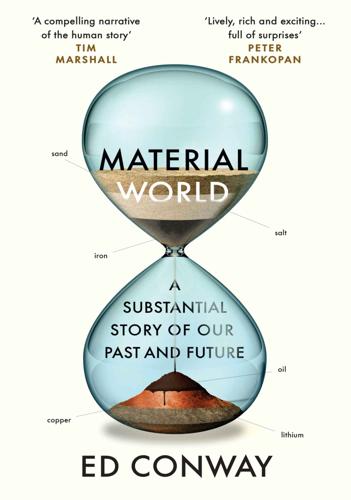
Material World: A Substantial Story of Our Past and Future
by
Ed Conway
Published 15 Jun 2023
(IHS Market/S&P Global, 2022). 8 Smil, How the World Really Works . 9 Zoltan Pozsar, ‘War and Industrial Policy’, Credit Suisse, 24 August 2022. 10 Diane Coyle, GDP: A Brief but Affectionate History (Princeton University Press, 2015); Pozsar, ‘War and Industrial Policy’. 11 The typical Panamax container ship can carry just over 5,000 TEU (containers), which works out at roughly 70,000 tonnes, as compared with the English merchant fleet’s combined capacity of 68,000 tonnes. Yuval Noah Harari, ‘Lessons from a Year of Covid’, Financial Times , 26 February 2021. 12 Smil, How the World Really Works , p. 51; Gait, ‘Why Isn’t the Price of Copper US$24,000/t’.

Meat: A Benign Extravagance
by
Simon Fairlie
Published 14 Jun 2010
It tells us nothing about what will happen on the million or so hectares – about half the area of Wales – that will provide the fuel, because it doesn’t even know where they will be.35 There is no attempt to examine what energy costs might be involved in planting, growing, felling, extracting and processing the timber, turning it into wood chips, transporting them to the coast, shipping them to Britain in 45,000 tonne Panamax boats, re-equipping the docks to unload them, constructing the 24 new buildings and silos at the £400 million plant (life expectancy 25 years), and constructing a new 250,000 volt connection to the national grid – not to mention all the ancillary stuff such as the journeys to work of the lumberjacks, dockers, power station operatives and electric meter measurers, or the computers used to provide environmental statements and calculate electricity bills.
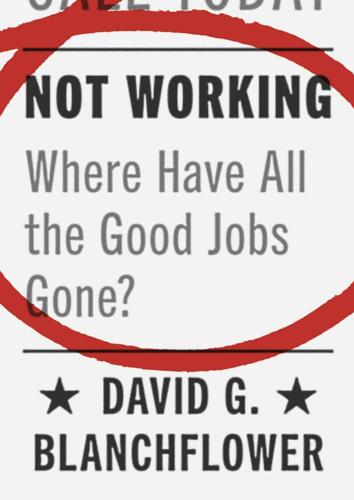
Not Working: Where Have All the Good Jobs Gone?
by
David G. Blanchflower
Published 12 Apr 2021
Well, some did. Figure 7.3. The Baltic Dry Index, 2006–17 Of special note here is the Baltic Dry Index (BDI), which collapsed in the fall of 2008 and has hardly recovered (figure 7.3).25 The Baltic Dry Index is issued daily by the London-based Baltic Exchange. The index covers Handysize, Supramax, Panamax, and Capesize, massive dry bulk carriers of a range of commodities around the world including coal, iron ore, and grain. BDI covers 100 percent of dry bulk cargo in transit on the world’s oceans but does not include ships transporting freight via container or transport of energy liquids by tanker.26 On May 20, 2008, the index reached its record-high level since its introduction in 1985, of 11,793 points.